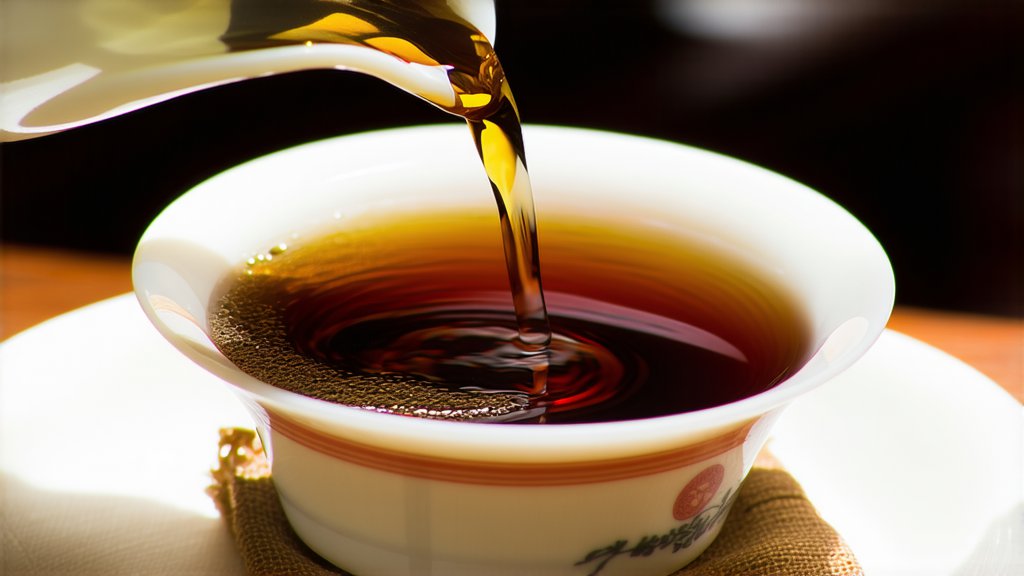
In the vast and diverse landscape of Chinese tea culture, few varieties have achieved the international acclaim and timeless appeal of Keemun Black Tea. Hailing from the picturesque mountains of Qimen County in Anhui Province, Keemun, also known as Qimen Black Tea, stands as a testament to China's centuries-old tea heritage. This article delves into the captivating history, varietal nuances, intricate production process, and the art of appreciating Keemun Black Tea, offering readers a comprehensive understanding of this exquisite beverage that continues to enchant tea connoisseurs worldwide.
A Glimpse into History
The origins of Keemun Black Tea can be traced back to the Tang Dynasty (618-907 AD), with its prominence solidifying during the Qing Dynasty (1644-1912). Legend has it that a local tea farmer named Xu Ganbai discovered the unique processing method that would give birth to Keemun by accidentally allowing his green tea leaves to oxidize overnight. This serendipitous event led to the creation of a new category of tea – black tea – which quickly gained popularity for its distinct flavor profile and longer shelf life compared to green tea. By the 19th century, Keemun had become a staple in British afternoon tea ceremonies, further cementing its status as a global icon.
Varietal Diversity
Keemun Black Tea encompasses several sub-varieties, each with its own character and charm. The most renowned among them include:
- Huang Shan Mao Feng (Yellow Mountain Fur Peak): Named after the majestic Yellow Mountain range where it is grown, this variety boasts a full-bodied flavor with notes of honey and orchid.
- Gong Mei (Tribute Eyebrow): Characterized by its twisted, eyebrow-shaped leaves, Gong Mei offers a smooth, mellow taste with hints of caramel and dried fruit.
- Zheng Shan Xiao Zhong (Authentic Mountain Small Species): Grown in the Wuyi Mountains of Fujian Province, this variant features a robust, malt-like flavor with a distinctive mineral undertone.
These variations not only reflect the terroir of specific growing regions but also showcase the adaptability and creativity inherent in Chinese tea cultivation.
The Art of Craftsmanship
The production of Keemun Black Tea is an intricate dance between nature and human skill, involving several meticulous steps:
- Plucking: Only the top two leaves and bud are handpicked during the spring and early summer months when they are at their freshest and most nutrient-rich.
- Withering: Freshly plucked leaves are spread out thinly on bamboo mats to wilt under the sun, reducing moisture content and softening the cell walls for better oxidation.
- Rolling: Leaves undergo a series of rollings to release juices, shaping them into tight curls and facilitating further oxidation.
- Oxidation: Unlike green tea, Keemun undergoes a controlled oxidation process, where enzymes react with oxygen, turning the leaves a deep coppery brown and developing complex flavors.
- Firing: Finally, the tea is baked or roasted to halt oxidation, locking in its unique aroma and taste.
This traditional method, passed down through generations, ensures that each batch of Keemun retains its authenticity and exceptional quality.
Appreciating Keemun Black Tea
To truly appreciate Keemun Black Tea, one must engage in the ritualistic practice of a traditional Chinese tea ceremony. Here's how:
- Warm the Teapot: Begin by rinsing your teapot and cups with hot water to预热 them and remove any impurities.
- Measure the Tea: Use approximately 3 grams of loose leaf tea per 150ml of water. Place the tea in a gaiwan (a lidded bowl used for brewing and serving tea).
- Steeping: Pour hot water (around 90°C/194°F) over the leaves, allowing them to infuse for about 30 seconds for the first infusion. Subsequent steepings can be extended gradually.
- Serving: Swirl the gaiwan gently before pouring the liquor into cups, ensuring an even distribution of leaves and flavor.
- Savoring: Observe the tea's color, inhale its fragrance, then take small sips to fully experience its complexity and depth.
Keemun Black Tea pairs beautifully with light snacks like mooncakes or almond cookies, enhancing both the tea and the accompaniments without overpowering either.
In conclusion, Keemun Black Tea is more than just a beverage; it embodies a rich cultural legacy and an unparalleled craftsmanship that has stood the test of time. From its storied past to its meticulous production process and the artful enjoyment it inspires, Keemun invites us to slow down, savor life's simple pleasures, one cup at a time. As we raise our cups to this extraordinary tea, we partake in a tradition that connects us across continents and generations, fostering a shared appreciation for the beauty and wisdom embedded within each leaf.